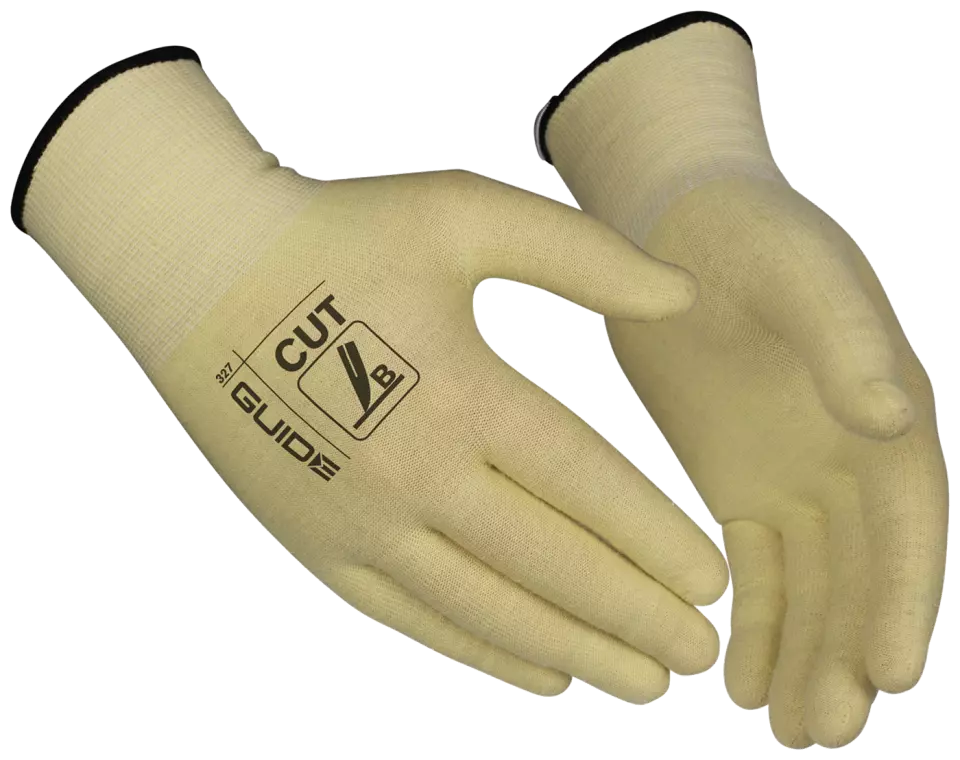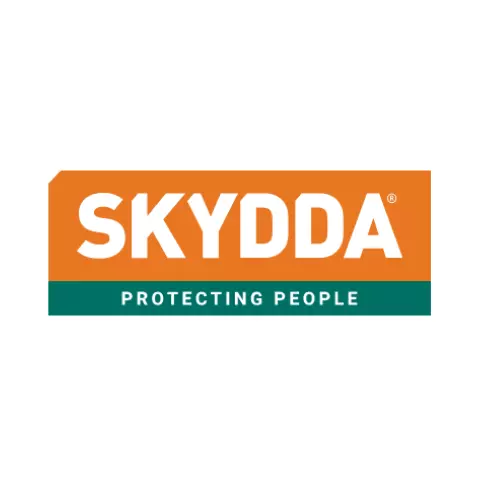Guide Cut Protection Glove
Skydda
visit storeProduct description
Cut resistant glove, kevlar. Slash protection level BNeuleu glove material kevlar/metal/polyester/cotton blend. Soft and comfortable. Suitable as a base glove. Approvals: EN 388 1 X2 XB
Determines how the glove secures around the wrist, affecting fit, comfort, and protection coverage at the wrist area.
Versatile design for a wide range of tasks, giving you reliable protection and flexibility for diverse jobs.
Full finger coverage provides complete protection for all your digits, ensuring maximum safety.
The exterior color of the gloves, which can aid in workplace identification, visibility, and compliance with safety protocols.
- Cut Resistant
- Hand Protection
Request a free sample
Test first and buy later. Visit any product page to request your free sample.
Standards and labels
EN 388:2016 is a European standard for measuring the performance of protective gloves against mechanical risks (abrasion, cut, tear, and puncture). The standard includes test methods and performance requirements for gloves to be considered compliant. Test results are reported using a series of four numbers, each representing the performance level achieved in one of the tests.
Test results
Abrasion Resistance Level 1In the EN 388:2016 standard, the Abrasion Resistance result Level 1 signifies that the tested gloves or protective materials can withstand 100 cycles of sandpaper abrasion under pressure, before developing a hole. This is considered the lowest performance level in abrasion resistance according to the standard. Generally, Level 1 abrasion resistance would be underperforming for tasks that involve frequent contact with abrasive surfaces, and might be more suitable for situations where light abrasion is the primary risk. Higher numbers (up to 4) in this test indicate stronger abrasion resistance.
Tear Resistance Level 2EN 388:2016 is a European standard that sets criteria for testing the mechanical risks for protective gloves, including abrasion, cut, tear, and puncture resistance. The Tear Resistance Level 2 designation indicates that the gloves have a moderate level of resistance to tearing. The test for tear resistance involves subjecting a sample of the glove material to a force until it tears, and the force required to initiate and propagate the tear is measured. Gloves that achieve Level 2 tear resistance can withstand between 25 to 50 Newtons of force. This level of tear resistance is suitable for tasks where gloves might face moderate stresses that could cause tearing, such as general handling and light industrial work where sharp or jagged materials are handled less frequently. These gloves provide reliable protection and durability in scenarios where some degree of mechanical risk is present but not excessively severe.
Cut Resistance, ISO 13997 Level BThe Cut Resistance test, ISO 13997, as per standard EN 388:2016, aims to gauge the resistance of protective glove materials against cuts by sharp objects. A test result of Level B means that the protective material can withstand forces between 5 and 10 Newtons before being penetrated. This implies moderate resistance, suitable for tasks like packaging, goods manufacturing, and warehousing. The ISO 13997 test involves using a TDM test device equipped with a straight-edge blade drawn once across the material in a defined direction until penetration occurs. The distance the blade travels before cutting through the material is recorded. This test, with its rigorous measurement of cutting force, is particularly useful for materials that tend to blunt blades, ensuring accurate and reliable performance ratings for gloves specifically meant for mechanical hazards. The practical implication for gloves rated at Level B is they offer moderate protection suitable for industries with moderate cut hazards, thus ensuring user safety in specific working environments like logistics or light manufacturing.
CE Marking is a label that shows a product meets certain safety and environmental standards set by the European Union. To get the CE Marking, a company must test and certify their product meets these standards. CE Marking is required for many products sold in the EU, including electronics, machinery, toys and medical devices. It helps ensure that products are safe for consumers and the environment, and allows for easy trade within the EU.
PPE stands for "personal protective equipment." PPE Category 2 refers to equipment that is more complex, and has a higher level of risk. Examples of PPE Category 2 include safety helmets, ear protection, and fall arrest equipment. In Europe, PPE Category 2 must meet certain safety standards set by the European Union, which means that it must be designed and manufactured to protect the user without causing harm. Companies that make or sell PPE must prove that it meets these standards. They also must have a quality management system in place and have to be audited regularly by a notified body.
Skydda delivery terms
Free delivery when you order more than 1 650,00 kr from Skydda
Supplier shipping fee 60,00 kr
Brand minimum 0,00 kr
612,00 kr
Price per 6 pairs
102,00 kr / pair
Shipping fee is 60,00 kr for orders under 1 650,00 kr
A package contains 6 pairs
Need larger quantities?
Other products you may like
Recently viewed
Need help?
Get help from our experts
Other products you may like
Similar products you may like
Autonomous sourcing platform
The most efficient way to source and order supplies for your operations
Sourcing
Ordering
List products you’re looking for and we’ll find the best products and prices for you – all for free.
Need help?
Get help from our experts



